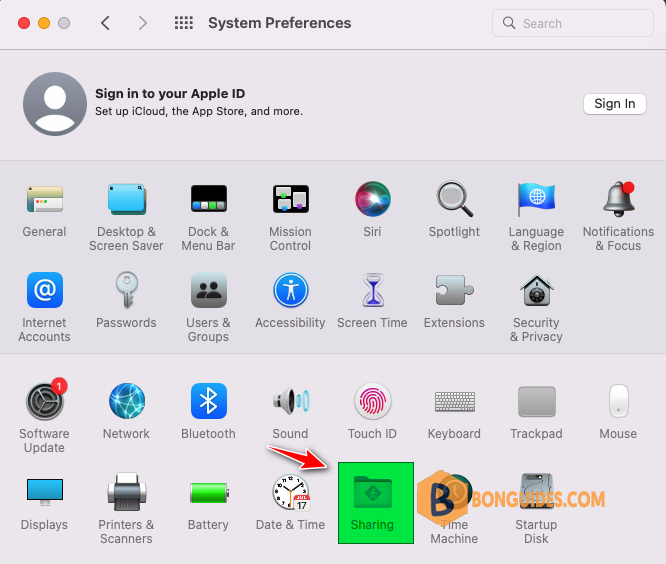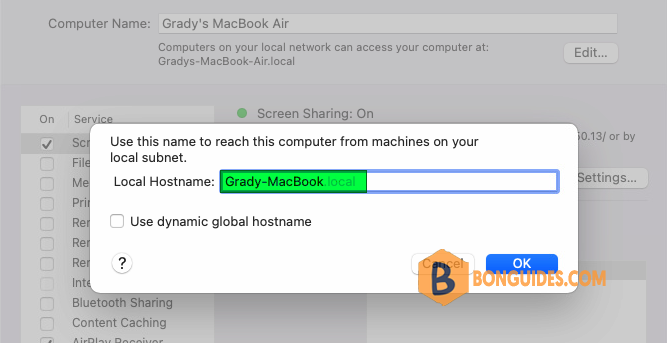Table of Contents
Your computer’s name and local hostname are used to identify your computer on your local network. There are plenty of reasons to change MacBook name profiles, especially if you’re using Airdrop or Bluetooth accessories. Having a recognizable name for your Mac will make the whole process much better.

Change macOS computer name using settings
1. Click on the Apple icon in the top-left corner of your screen and select System Preferences.

2. In the System Preferences window, select Sharing.

3. At the top of the window next to Computer Name enter the name you want for your Mac. That’s all you need to do. When you click anywhere outside the text entry box, it will change the name of your Mac.

Change the computer’s local hostname
Your computer’s local hostname, or local network name, is displayed on your local network so others on the network can connect to your Mac. You can manually edit your hostname if you don’t want it to be the same as your computer name.
1. On your Mac, choose Apple menu | System Preferences | Sharing.
2. The local network name is your computer’s name with .local added, and any spaces are replaced with hyphens (-). Local network names aren’t case sensitive, so my-computer.local is the same as My-Computer.local.
Click the Edit button under the Computer Name field and enter the new host name.


Change Mac hostname or computer name from the Terminal
1. Open Terminal app then type the following command to change the primary hostname of your Mac. This is your fully qualified hostname.
sudo scutil --set HostName "flame01.bonguides.com"Last login: Tue Nov 15 20:46:21 on ttys000
bonben@Gradys-MacBook-Air ~ % hostname
Gradys-MacBook-Air.local
bonben@Gradys-MacBook-Air ~ % sudo scutil --set HostName "flame01.bonguides.com"
Password:
bonben@Gradys-MacBook-Air ~ % hostname
flame01.bonguides.com
bonben@Gradys-MacBook-Air ~ %Type the following command to change the Bonjour hostname of your Mac. This is the name usable on the local network, for example myMac.local.
sudo scutil --set LocalHostName "flame01"Type the following command to change the computer name. This is the user-friendly computer name you see in Finder, for example myMac.
sudo scutil --set ComputerName "flame01"




